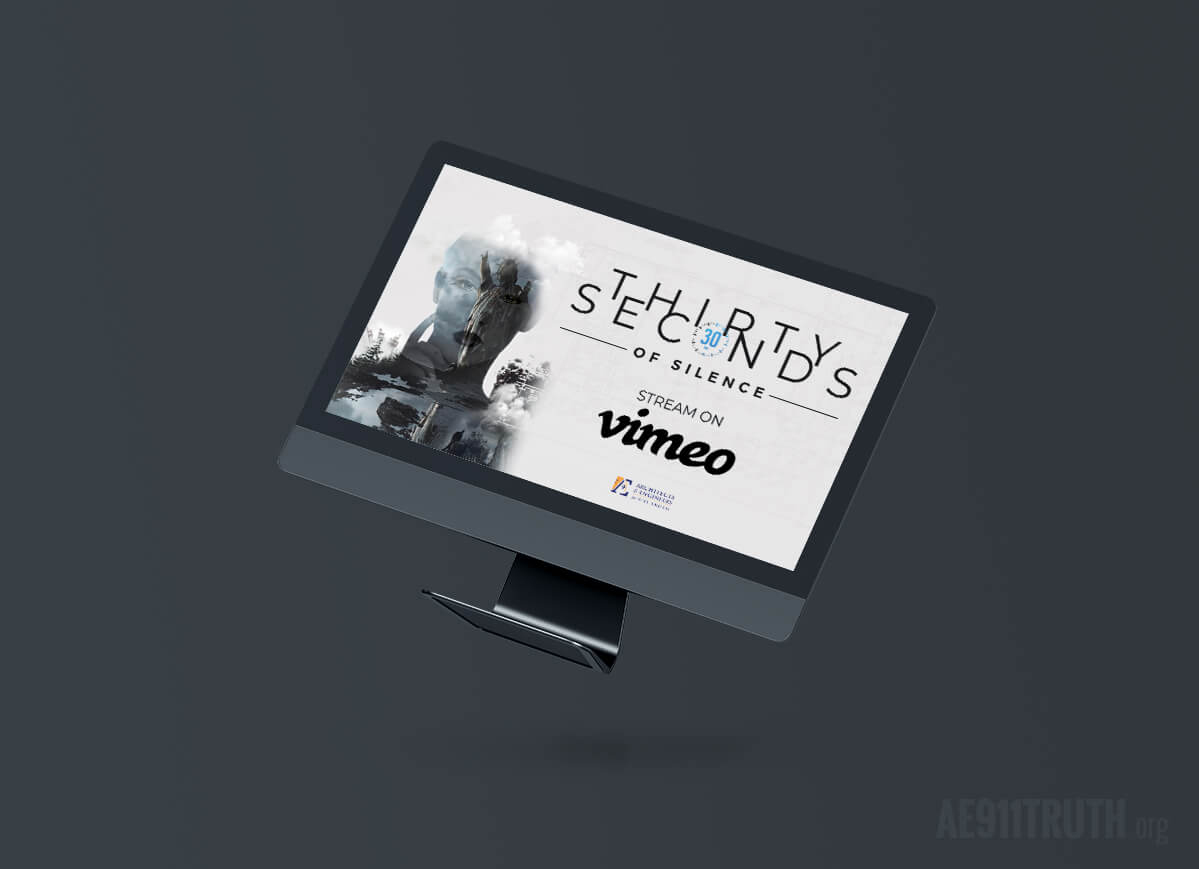“Calling Out Bravo-7 is the best, most detailed and most informative film to date on the collapse of World Trade Centre Building 7. A very important piece of work.” – Tony Rooke, film producer.
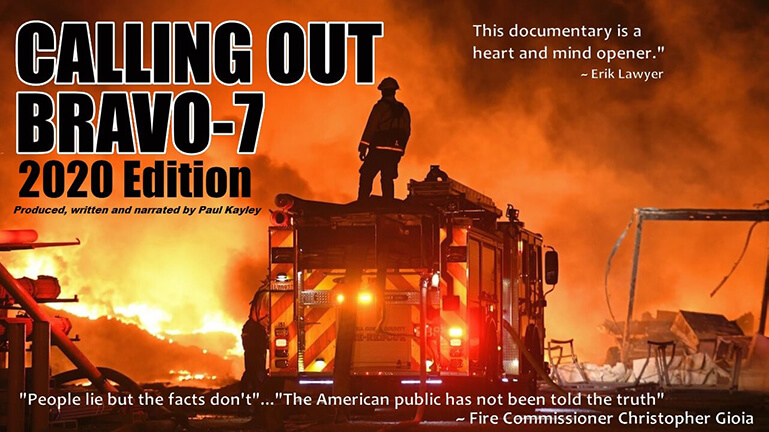
Since making the documentary Calling Out Bravo-7, I’ve often been asked by British fire service officers and firefighters who’ve seen it, “Why isn’t the American fire service looking at this and asking the same questions?” This is something the more well-informed members of the public are also curious about.
Unfortunately, I have no quick or rational answer for them. My only suggestion is that, like ourselves, many outside the FDNY might not even know about Building 7, and those who do know are keeping their heads down because they’ve been told that it’s somehow dishonourable to question this incident because so many died on that day. This is ironic, because normally incidents with fatalities are questioned the most, and the greater the losses, the greater the questioning.
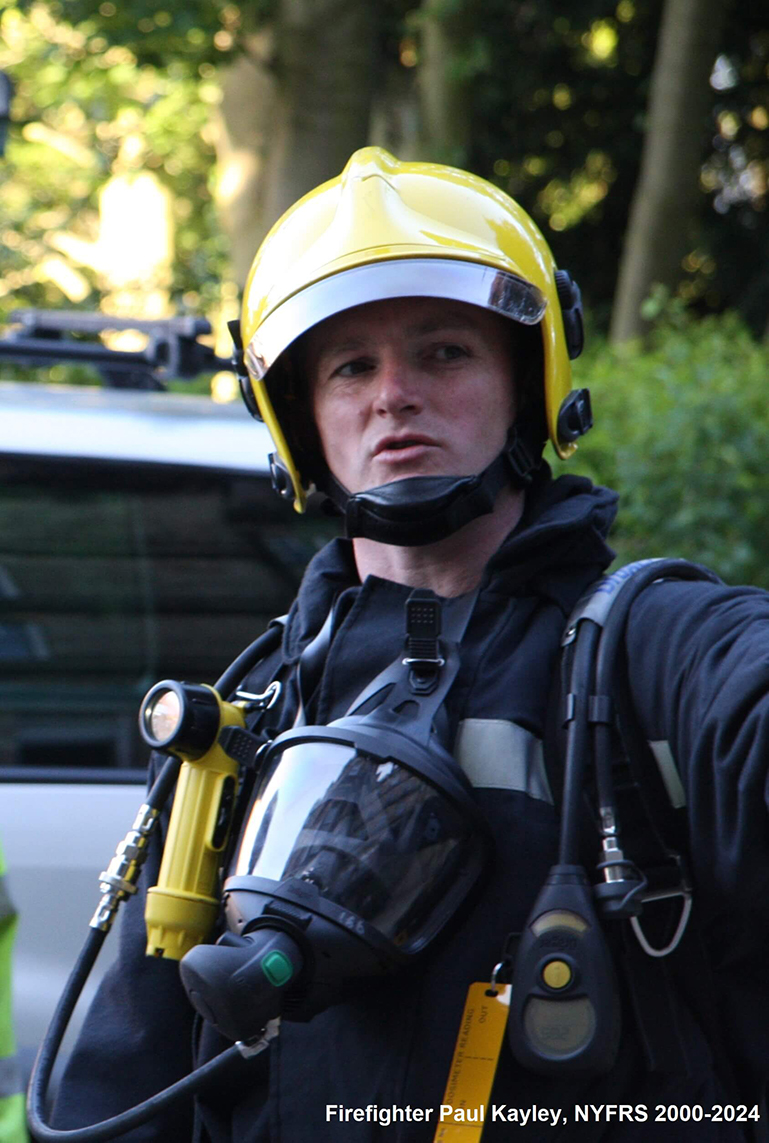
Personally, if during my career I had lost my life in an incident and the cause had been written off as something it wasn't, the best way to honour me would be to question it and bring the truth to light. In fact, honouring someone’s loss was one of several reasons why I became so involved in this in the first place. I was contacted in January 2016 by a family member of a 9/11 victim who asked for support from the British fire service in seeking answers and justice following his brother’s death at the World Trade Center in 2001.
When first looking into this objectively as a professional firefighter, the theory being proposed by the National Institute of Standards and Technology (NIST), claiming that “normal office fires” could cause this scale and pattern of collapse, simply made no physical sense to me.
The starting point of any serious enquiry into this obviously starts with questions about the building. In Calling Out Bravo-7 I try to convey how highly engineered Building 7 actually was. We are not talking about a Third World budget-build that was poorly designed and thrown up in a hurry, cutting corners and held together with hope and backhanders. This was a truly impressive example of modern architecture. In summary, it was a 47-story Type-1 (fully fire protected) steel-frame structure consisting of 82 columns (24 core and 58 perimeter) with concrete-on-steel-deck composite flooring assemblies, incorporating thousands of shear studs connecting the concrete slabs to the steel beams to create a robust and resilient structure. These shear studs are a crucial part of the situation, as detailed in the documentary.
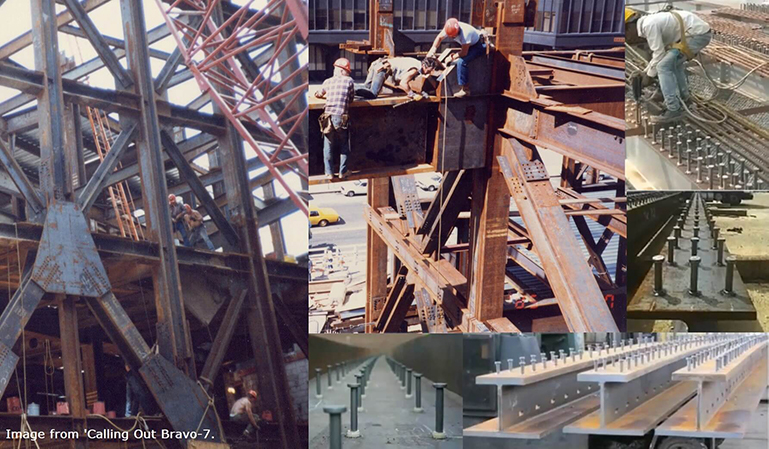
When watching the footage of this super-structure coming down from all available angles, there’s obviously more involved than just “normal office fires.” It suddenly and completely lets go, coming straight down through itself with a horizontal and level roofline. Practical common sense tells us that for this symmetry to occur there had to be uniform and coordinated removal of support from all the critical columns instantaneously.
Consider a simple example of a structure supported by columns – a dining table with four legs. If you were to kick out just one leg, how would the tabletop fall? What would be required for the tabletop to fall horizontally level and straight down without toppling? Of course, you would need to remove all four legs simultaneously, with perfect timing.
NIST’s computerized theory proposes that a single column in the northeast corner of Building 7 failed, due to a beam sliding off its seat because of thermal expansion. This is then claimed to have brought down the entire building like a house of cards, with symmetry and a level roofline.
Interestingly, the principal conclusion of a three-year analysis by the University of Alaska Fairbanks, “A Structural Reevaluation of the Collapse of World Trade Center 7,” published in March 2020, is that fire did not cause the collapse of Building 7. The secondary conclusion of the study is that the collapse was “a global failure involving the near-simultaneous failure of every column in the building.” (1)
When numbers and hard data are added to what is seen in the videos of Building 7 collapsing, it becomes even more compelling that there is much more to this than just “normal office fires” and “thermal expansion.” There is verified and peer reviewed data accurately quantifying Building 7’s freefall acceleration of 9.82 m/s2. It went into freefall for a total of 108 feet, the equivalent of 8 stories, all verified independently and documented within the NIST report itself, albeit somewhat buried in the details (2). As we all know, for freefall to occur there has to be ZERO resistance acting against the fall, but Calling Out Bravo-7 makes no assumptions about the general public’s knowledge of physics and attempts to cover this area with interesting footage of the World’s largest vacuum chamber, parachutists and some of the brilliance of American theoretical physicist Richard Feynman.
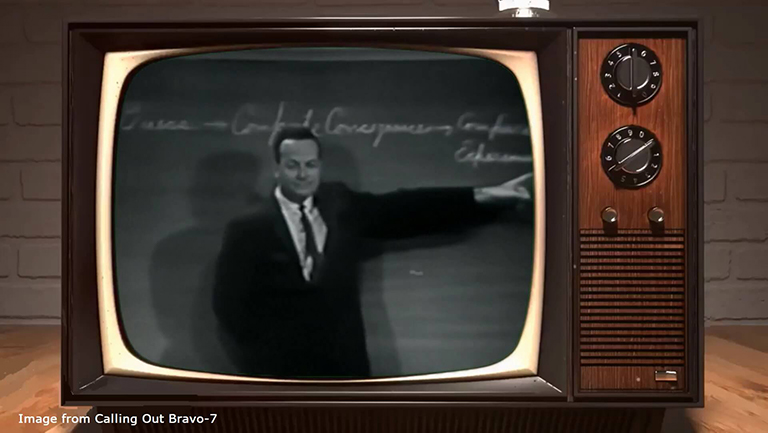
At the beginning of my research, these crucial details – combined with an expanding knowledge of all the omissions and misrepresentations in the NIST report – made me confident beyond all reasonable doubt that the official theory is not only unacceptable, it’s physically impossible. In fact, the more I studied the NIST report, the more misleading and dishonest it revealed itself to be.
I was not alone in my reluctance to blindly trust NIST. Under the US Department of Commerce, NIST was an agency of the Bush and Cheney administration during the very years it was writing its World Trade Center reports. In 2004, the Union of Concerned Scientists published a document accusing this administration of “distortion of scientific knowledge for partisan political ends.” This document was signed and endorsed by more than 15,000 scientists, including 52 Nobel Laureates and 63 recipients of the National Medal of Science (3).

The claims made by NIST, if trusted, would be of particular relevance to the fire service because high-rise firefighting procedures, both in Britain and the USA, rely on a small number of primary assumptions about the performance of specific building types during a fire. If NIST’s theory is correct these assumptions would need to be immediately addressed as critical safety concerns. The main one being that modern First World fire-protected structures are designed and constructed to tolerate the stresses of any fire fuelled by the structure’s intended contents, with inbuilt redundancy.

What does that mean in simple terms? Well, in a highly engineered steel-framed construction like Building 7, fire-protected more than what was legally required at the time for NYC (4), the fire resistance of a structure would be greater than the fires to which it would be exposed. In other words, the building would be expected to easily tolerate the fires it experienced. Building 7 had normal office combustible load levels ranging from 20-32 kg/m2, which is only enough material to burn for approximately 30-45 minutes in any given location. These values are accepted and documented within the NIST report. In fact, the NIST report is more conservative on burn time, stating: “Fires for the range of combustible contents in WTC 7 – 20 kg/m2 (4.0 lb/ft2 ) on Floors 7 to 9 and 32 kg/m2 (6.4 lb/ft 2 ) on Floors 11 to 13 – persisted in any given location for approximately 20 min to 30 min.” (5)
Consider the above in context with the fact that Building 7’s main supporting columns had at least 3 hours passive fire-protection and the flooring assemblies had 2 hours passive fire protection. Therefore, the building had fire protection well in excess of what was needed to resist the fires it experienced. Because of these generous protection margins, rather than depending on water alone to suppress a fire, architects and fire service procedures trust the resilience of these structures to easily tolerate the duration of fires fed by the interior fuels. In a building like this, an active fire suppression system, such as sprinklers, is not needed to save the core structural integrity of the building from failure. Its primary purpose is to reduce and limit fire spread, and in doing so minimise internal losses and improve conditions for survivability and rescue.
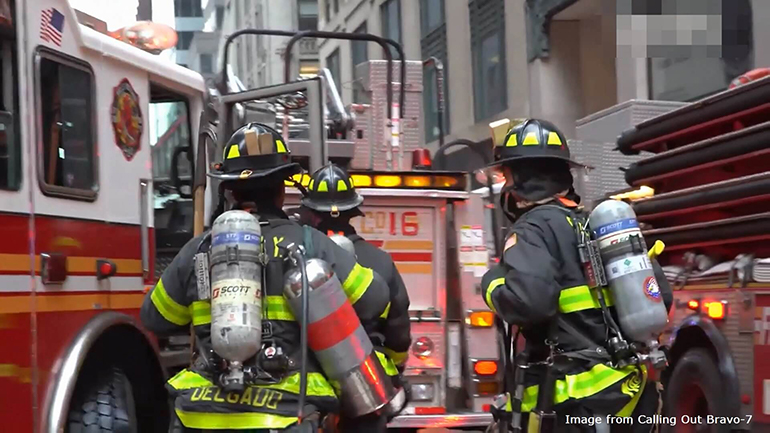
As demonstrated in the documentary: although NIST knows all of the above, it misleads the public by first stating that the outcome was caused by a fire lasting several hours but not pointing out the significance of the fact that the fires were travelling, obeying normal fire physics and self-extinguishing after a short period of time as they burned themselves out. NIST blames these “long lasting” and unchecked fires on failed water supplies to firefighters and the sprinkler system. Somehow NIST is content with telling us that water was available for firefighting operations all around Building 7, but not within it.
They state: “While the fires in other buildings were actively fought by firefighters to the extent possible, in WTC7, no efforts were made to fight the fires because of the lack of water supply.” (6)
Ask any professional firefighter to explain this and he/she will tell you that it makes no sense. If water was available in the vicinity of Building 7, it could also have been made available to firefighting efforts around and within the building via various methods and facilities. Making water available to fight a fire is a primary skill and responsibility of fire services, as described in the film.
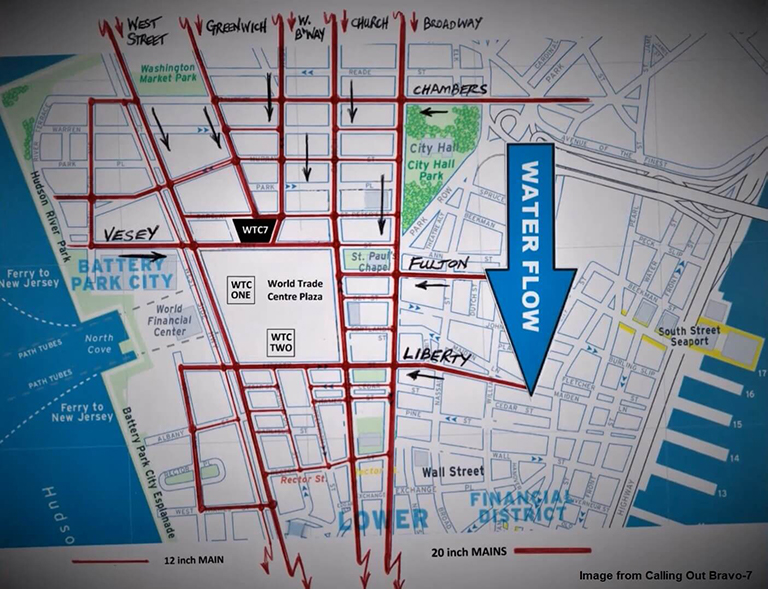
I cover this misleading argument in detail in Calling Out Bravo-7, showing that due to lessons learned from historical fires, NYC actually has one of the most robust gravity fed water distribution systems in the world, with huge volume capacity derived from upstate New York. The firefighting efforts in Building 7 were not hindered by practical limitations, they were obstructed by something else. The sprinkler system had several fail-safe measures, including two independent mains water feeds into the building from different street mains, back-up water pumps and diesel generators.
It is possible that there may have been some localised failures to the sprinkler system within the building, perhaps to sprinkler supply pipes running up protected stairwells. Calling Out Bravo-7 covers the witness statements of two men trapped in Building 7 who reported explosions in a stairwell prior to the twin towers coming down, lending further weight to this possibility. There is also footage of the sprinkler system in operation spraying water at pressure on the 7th floor. The sprinklers on the first 20 floors required water exclusively from the street fed water mains. But remember, as previously stated, an operational sprinkler system was not required to protect the fundamental structural integrity of the building.

It’s worth pointing out two commonly expressed misconceptions among fire professionals who know of this case but obviously expect more than just “normal office fires” to be the cause.
The most common misconception is a belief that the diesel systems in Building 7 contributed to its collapse. I met one very well known and respected fire professional at the National Fire Prevention Association (NFPA) conference in Orlando this summer who believed this. NIST itself discounted this possibility, stating that diesel fires “would have produced large amounts of visible smoke from the lower floors, which were not observed.” NIST also states that a contractor recovered the diesel fuel stores several months after the collapse (7). From a practical point of view, it’s also worth questioning how diesel fuel could result in a symmetrical freefall collapse, which would require “the near-simultaneous failure of every column in the building,” as per the Alaska Fairbanks university conclusions?
The second most common misconception is that the south face of Building 7 was so devastated by debris falling from the North Tower that this caused the structure to completely fail. Again, NIST discounts this, probably because it would have resulted in the building dramatically toppling to the south rather than coming down vertically, straight through itself, as observed. Instead, NIST asserts that, “Even without the structural damage, WTC 7 would have collapsed from the fires that the debris initiated. The growth and spread of the lower-floor fires due to the loss of water supply to the sprinklers from the city mains was enough to initiate the collapse of the entire building due to buckling of a critical column in the northeast region of the building.” (8) NIST attributes the collapse to a single column failure in the north-east corner. If the collapse had been initiated by damage to the south face, you’d probably expect the building to topple to the south, as seen in the following diagram.

When considered in isolation, removed from all the emotions and the prejudices of the day, Building 7’s collapse should have become one of the world’s most significant and widely discussed fire case studies. Hopefully that will become the case as an increasing number of professionals are acknowledging it’s now time to look at this.
In society there is an unspoken trust and expectation that the fire service, committed to protecting the public, would readily speak out on matters of major public interest – especially when it involves potentially misleading information relevant to their professional expertise. A small number of us are trying to be heard, including most recently Captain Raul Angulo, author of Engine Company Fireground Operations, (4th Edition).

During the summer we teamed up in Orlando, Fla., at the NFPA conference to give a presentation on this subject, together with the Protecting All Protectors Alliance (PAPA). It was very encouraging to meet many fire professionals who are now ready to seriously question this hitherto taboo subject.
Positive connections were made at the conference, including a lead into Captain Angulo writing an outstanding and comprehensive article about Building 7 for the International Fire & Safety Journal (IFSJ). (10)
We also have a website: Firefighters for 9/11 Truth – ff911truth.org

In 2016, I submitted all the professionally relevant information in a report to the British fire service and the Fire Brigades Union (FBU). The report was titled “Sudden Building Collapse – An Evaluation of a New Risk in Operational Firefighting.” This raised a few eyebrows and did a good job of identifying a few Teflon coated desktops.
After being put in a position where they had to address this officially due to health and safety regulations, the senior management team in my fire service eventually concluded that no new risk to its firefighters had been identified. They refused to discuss it further.
The FBU also made every effort it could to avoid getting involved with this subject, choosing to quietly kick it into the long grass. Its excuse was that its “sister organization,” the International Association of Firefighters (IAFF), had committed its maximum resources and left no stone unturned in looking at this. Of course, I quickly contacted the IAFF and asked for the findings of its investigation. The IAFF replied, “The only information we have to provide is the following”: with a document attached which made absolutely no mention of the WTC investigations or details of any amendments to high-rise firefighting operations in response to NIST’s new theory of progressive collapse.
Until the day arrives when the fire service and the union bodies find the motivation to speak out, please draw your own conclusions about their position on this subject from the fact that high-rise firefighting procedures remain unchanged in the wake of the 2008 NIST report, with forward control points continuing to be employed deep within these buildings as they burn. If what NIST is claiming has any validity in the real world, such a practice would have changed. That alone speaks volumes about how much credence fire services around the world afford to NIST’s theory.

Film review - “I’m very critical of the videos that are made about 9/11 because they tend to be a mixture of good information and questionable information. I think we need to be very solid in our message and stick to what we really know. Calling Out Bravo-7 is an exception, it is absolutely solid. There is nothing in this video that I find questionable. It really presents the strongest information and it presents a very good case. It’s a good introduction to the events of 9/11 and especially the collapse of Building 7, and the fact that its from a firefighter’s perspective gives an added dimension to it. I very strongly recommend this video.” – David Chandler
References
- “A Structural Reevaluation of the Collapse of World Trade Center 7,” J. Leroy Hulsey, Ph.D., P.E., S.E., University of Alaska Fairbanks - https://files.wtc7report.org/file/public-download/A-Structural-Reevaluation-of-the-Collapse-of-World-Trade-Center-7-March2020.pdf
- NIST, NCSTAR 1A, WTC Investigation, p.45. - https://nvlpubs.nist.gov/nistpubs/Legacy/NCSTAR/ncstar1a.pdf
- 2004 Scientist Statement on Restoring Scientific Integrity to Federal Policy Making - www.ucsusa.org/resources/2004-scientist-statement-scientific-integrity
- NIST NCSTAR 1A, WTC Investigation, p.7, “1.2.4 Fire Protection” - https://nvlpubs.nist.gov/nistpubs/Legacy/NCSTAR/ncstar1a.pdf
- NIST, NCSTAR 1A, WTC Investigation, p.47. - https://nvlpubs.nist.gov/nistpubs/Legacy/NCSTAR/ncstar1a.pdf
- “FAQs - NIST WTC 7 Investigation” - www.nist.gov/world-trade-center-investigation/study-faqs/wtc-7-investigation , Q.12
- “FAQs - NIST WTC 7 Investigation” - www.nist.gov/world-trade-center-investigation/study-faqs/wtc-7-investigation , Q.19
- “FAQs - NIST WTC 7 Investigation” - www.nist.gov/world-trade-center-investigation/study-faqs/wtc-7-investigation , Q.17
- Sudden Building Collapse - A New Risk in Operational Firefighting, Paul Kayley - https://drive.google.com/file/d/0B3tnVLIhCdjSUHVHRms4NmoxSm8/view
- “Did World Trade Center Building 7 really collapse due to an office fuel load fire?” Captain Raul Angulo - https://internationalfireandsafetyjournal.com/did-world-trade-center-building-7-really-collapse-due-to-an-office-fuel-load-fire/
- IAFF response document - http://firefightertoolbox.com/wp-content/uploads/2013/06/High-Rise-Fireground-Field-Experiments.pdf
- Calling Out Bravo-7 - https://youtu.be/ksIwSizYaGs
***
Check out our engineering panel discussion and interviews from our anniversary 9/11 conference with Jill Stein, Jimmy Dore, Alex Stein, Zach Vorhies, and Daniele Ganser, Madhava Setty, Meryl Nass, Sean Stone and Ian Crossland that have already been posted on our YouTube channel!





